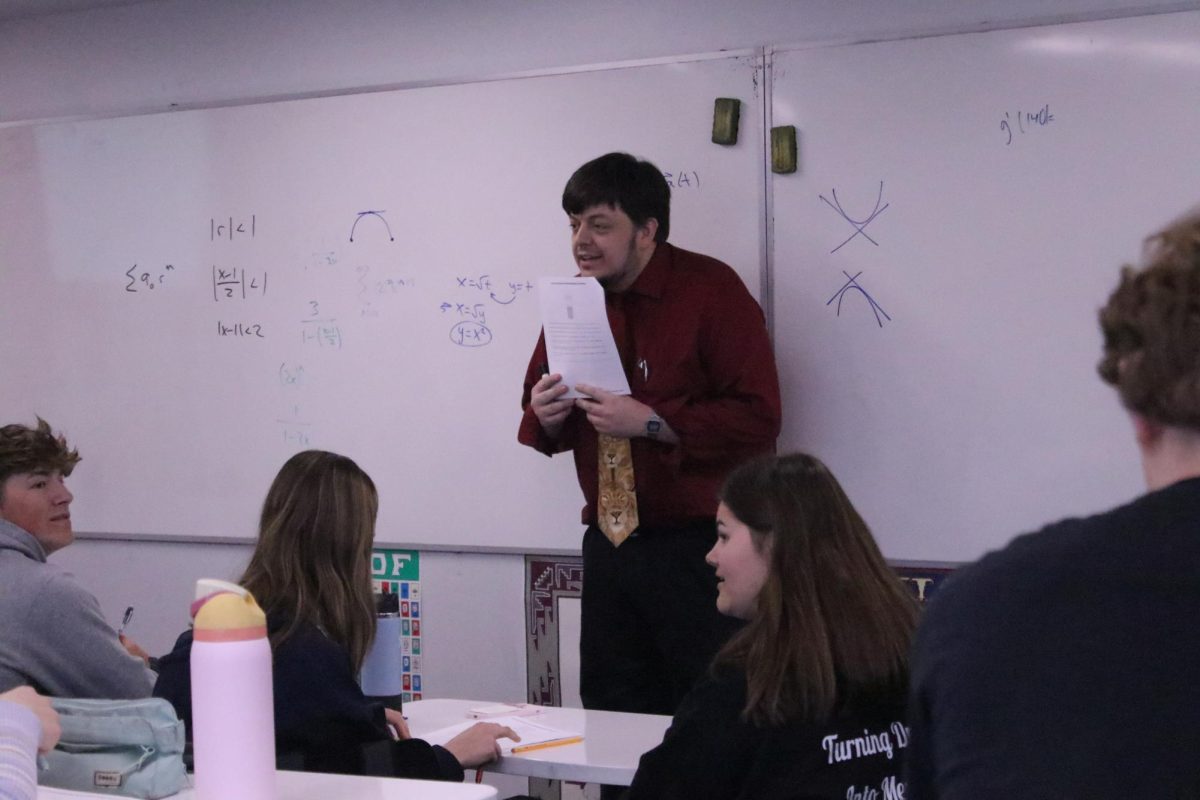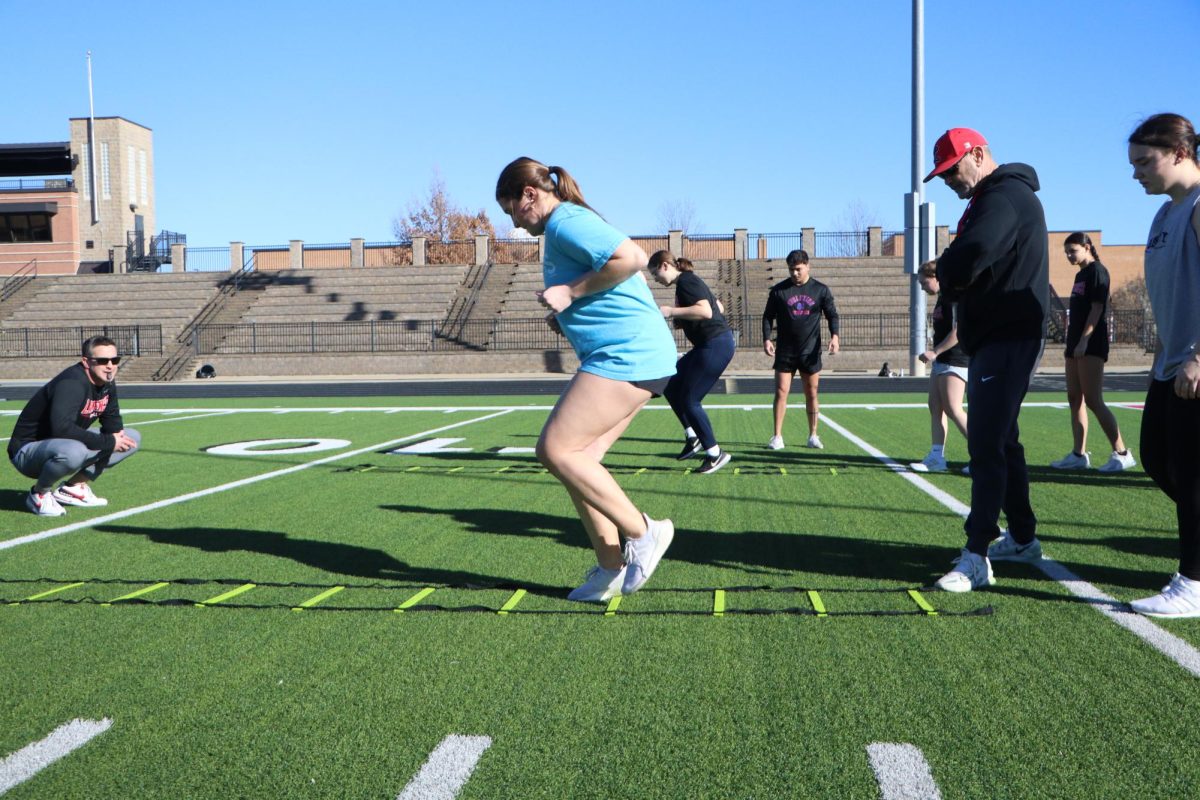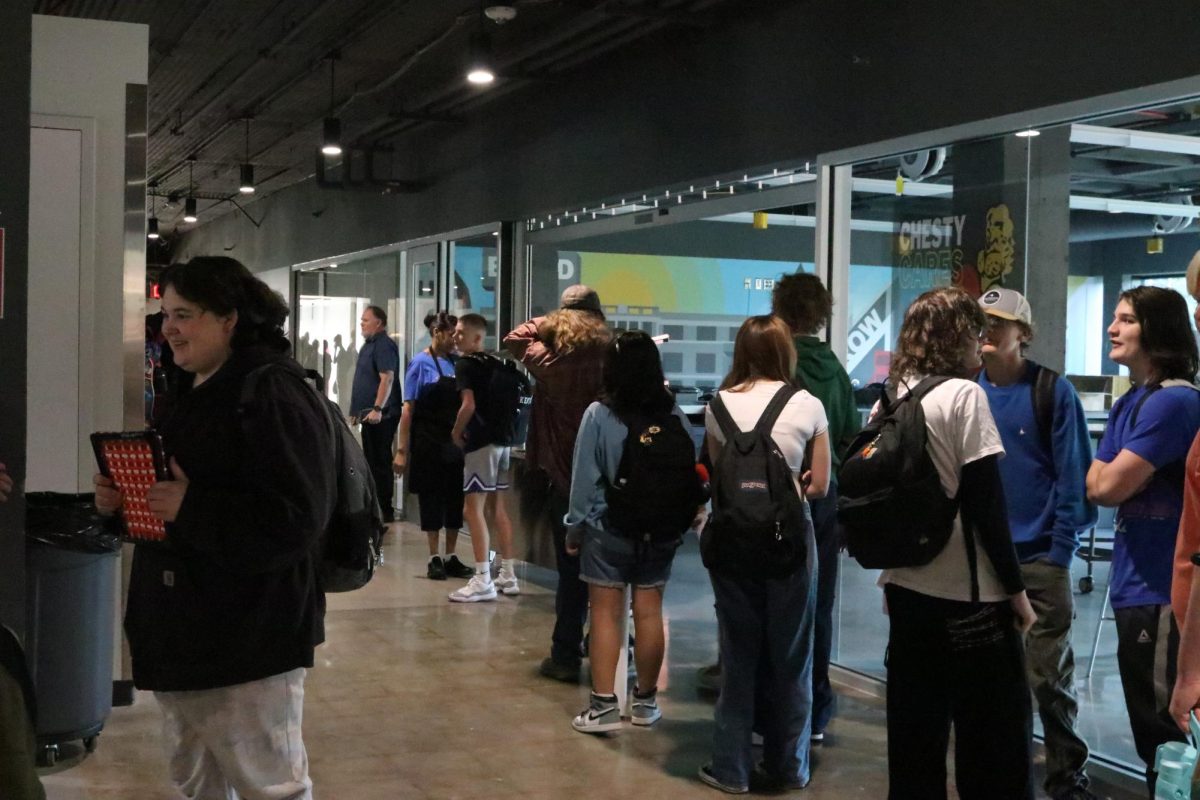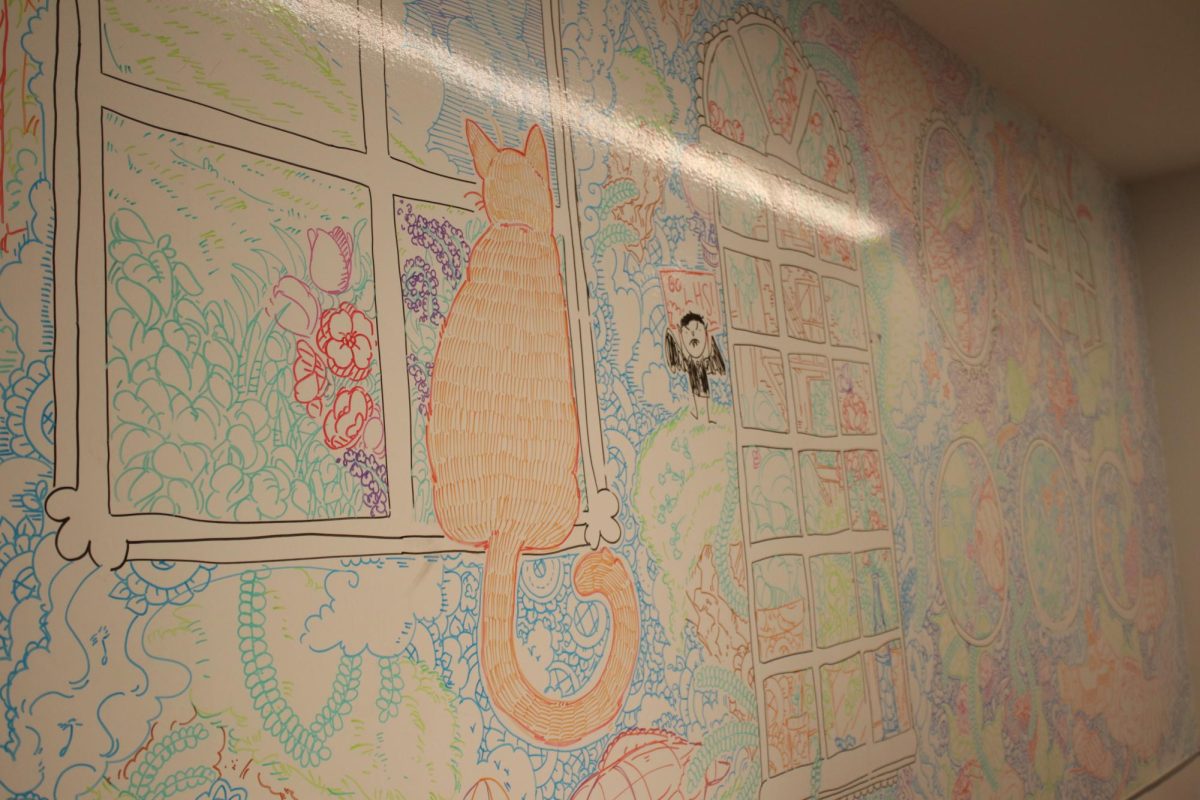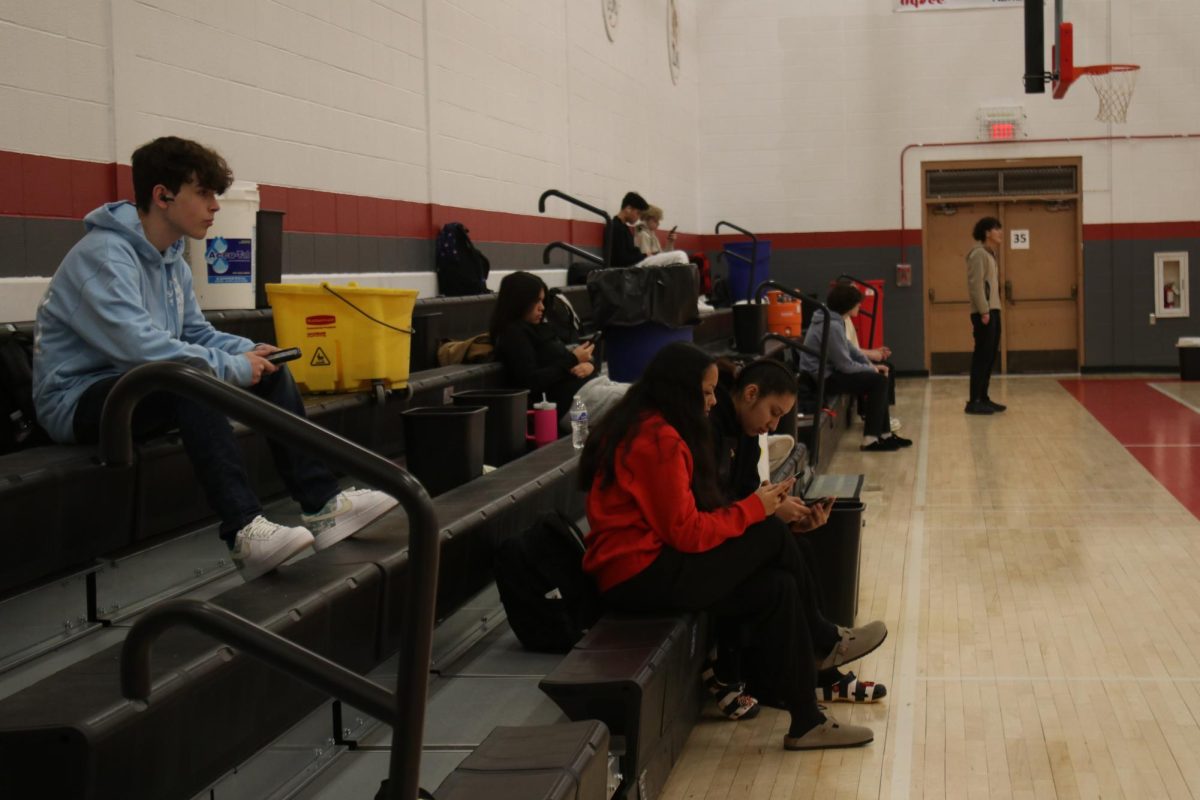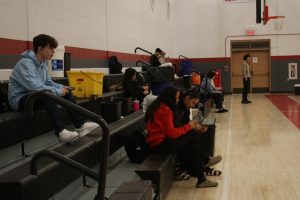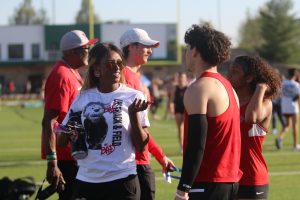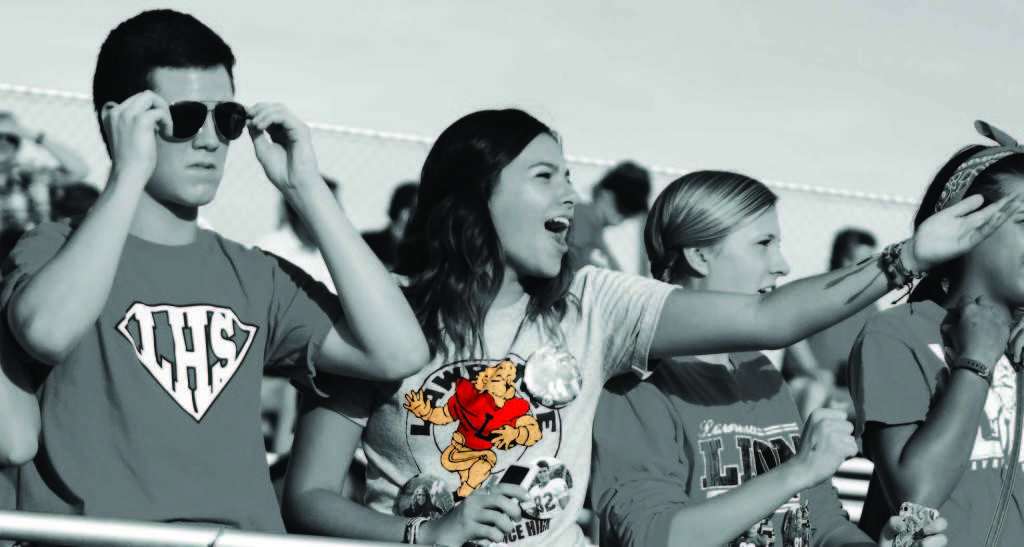
Adorning the shirt of senior Lindsay Kelly, Chesty’s presence stands out at games. Because the mascot isn’t trademarked, LHS doesn’t always benefit from its use. Photo illustration by Joseph Anderson
By Zia Kelly
Sometimes Chesty Lion has a football tucked under his arm. Sometimes he sports formal white gloves. Sometimes he’s next to the words “Lawrence High.” But two letters never appear next to him: ™.
And that is raising questions about if LHS should attempt to protect the mascot that has been in wide use since 1946 when former LHS student Paul Coker Jr. designed the lion.
Sixty-seven years later, the Chesty Lion remains the most commonly associated image with the school, so naturally it is used on almost all LHS merchandise. However, the Chesty Lion trademark has not been formally registered, and the school makes no attempt to protect the mark. This has left a window for outside businesses to profit on the logo.
“It probably hasn’t been significant enough in the past,” said Paul Vander Tuig, director of licensing at the University of Kansas. “But once you start to see it in the Walmarts and the Hy-Vees and the Dillons, my sense is that the trademark owners are probably leaving money on the table by not getting out there.”
Status quo
Lions Pride is the school’s main booster club and primary supplier of school merchandise sold at most home sporting events and in the student-run shop, the Lions Den.
With this affiliated body using the Chesty symbol, all proceeds go directly to the school.
But the Lions’ Pride and other school booster groups aren’t the only entities that use and profit from the Chesty Lion trademark. Anyone who shops at Target, Walmart, Hy-Vee or Dillons may have noticed the racks of Lawrence and Free State high T-shirts grouped with other sports teams’ gear.
“It is very lucrative business,” said Mike Gowing, general merchandise manager of the Lawrence 23rd Street Hy-Vee branch.
The Chesty Lion and Freddy Firebird mascots are in the public domain. Neither high school demands compensation from the sales.
“We recently began carrying Free State merchandise, but we have been carrying Lawrence High for years,” Gowing said.
Lawrence High has not, until recently, recognized consequences that came with having a mascot unprotected by law. The LHS mascot has been within the realm of fair use since its adoption. This is not an uncommon occurrence, most high schools don’t get their mascots trademarked.
As is, it is easy for others to use and legally manipulate Chesty however they please. A major component to a trademark claim is the power to maintain the consistent image of the symbol.
“If Chesty the Lion’s image were to be registered, it would ensure a uniform and consistent presentation of our school logo,” said Pat Treff, a Lions Pride volunteer. “The school would also protect its logo so that it was presented in a clean and tasteful manner that represents our school in a positive way.”
Protecting Chesty
Lawrence High still holds some level of rights to the trademark. Vander Tuig said it would not be much of a stretch to register Chesty for legal protection.
“Even though you don’t have the Chesty Lion registered at the state or at the federal level, you do have common law rights,” Vander Tuig said.
Merchandise licensing and profits are handled by manufacturers and then purchased by retailers to be sold for a profit. This makes it the responsibility of producers to negotiate use fees.
At the collegiate level, the standard royalty given to owner schools is 10 percent of profits. This amount is paid solely by the manufacturer, but affects the retail value of merchandise in stores.
While a fluctuation in price may be a burden for retailers, Vander Tuig suggests local franchises would be supportive of LHS if they decided to register Chesty.
“Are companies going to balk to the point that [they won’t print LHS merchandise] if they [LHS] wants 10 percent? Companies aren’t going to do that,” Vander Tuig said. “I think that companies would be happy to pay it. In fact, I would almost say that the companies have already built in a royalty. But because the high school hasn’t asked them to pay it, they just have a greater margin on their product.”
The Clinton Parkway Hy-Vee has empirically expressed its support toward Lawrence High and wouldn’t object to the request of royalties for trademark use.
“We donate a lot during the year to LHS, and the Sixth Street store donates to FSHS,” Gowing said. “We are big supporters of education in our Lawrence community and would not be against running promotions where a certain amount of sales are donated to the high school in addition to all of our other donations to LHS.”
The process for LHS to protect the Chesty trademark would depend on the type of trademark licence that would be issued. There are three levels of trademark protection: common law, federal and state-level protection.
Currently, Lawrence High holds common law rights for Chesty. This means that it is entitled to reproduce and distribute the trademark, but does not have the right to pursue legal action against an outside entity that does so as well.
The second type is state protection, which is managed by the state attorney general. This would be the likely choice if Lawrence High was to register Chesty Lion. A state licence requires a $40 fee that protects the trademark for five years. The licence is legal verification that any non-LHS entity wanting to use the symbol must get permission, pay royalties and have final print approval from the school.
“I think it almost always makes sense to protect the brand that represents you,” Vander Tuig said. “The one wildcard with this is, somebody drew that for you.”
Moving Forward
Lawrence High took its mascot from the work of Coker, who went on to become a cartoonist. The Chesty Lion is legally the property of Coker, who has not approached LHS about it since. He went on to create another well-recognized character, Frosty the Snowman.
Vander Tuig recognizes LHS’s trademarking circumstance as unique for this reason.
“Before you get too heavy handed with someone, you will want to see if you can reach out to the artist and find out if there would be any issue with you guys doing that,” Vander Tuig said.
While many businesses would be open to allowing a royalty for the school, Vander Tuig pointed out another factor that must be considered in the registration process.
“Somebody’s got to do it,” Vander Tuig said. “There’s got to be the time and the inclination to do it… So someone needs to define who would be in charge of the program. It’s not in anyone’s job description now.”
Administrators have not seriously considered protecting the Chesty trademark.
“That is just not a conversation that we have cared to have,” DeWitt said. “I think Chesty has been in the public domain long enough that it’s fairly pointless.”
While DeWitt said he recognizes the benefits of legitimizing a trademark, he said the district would only act in certain instances to do so.
“I wouldn’t unless I felt like Chesty was being misused or someone was being disrespectful or not using it with fidelity,” DeWitt said.
As far as royalty ownership, DeWitt said the school is probably losing some money from leaving Chesty unprotected, but he also sees value in having the mascot in the public domain.
While LHS may not receive royalties from some of the products sold, having the Chesty Lion around town and in the public domain gives Lawrence High exposure to a whole new group of people.
And that, he said, furthers the Chesty legacy.



